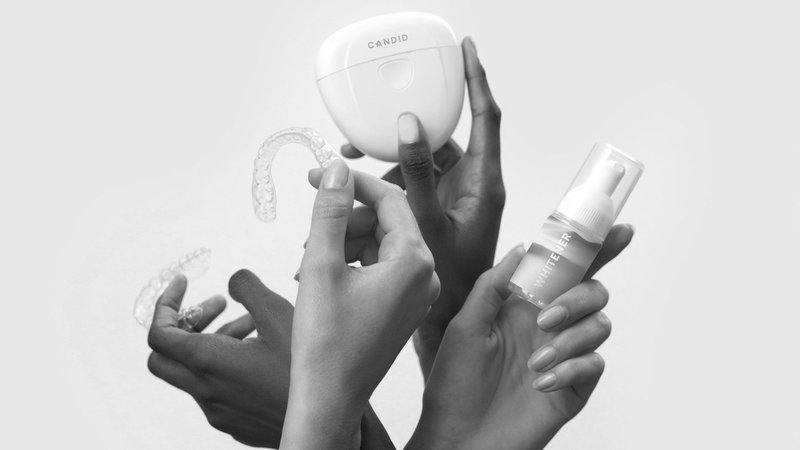Finding the best at-home teeth whitening solution might seem like the perfect way to achieve a brighter smile, but is it safe to use daily? You’ve probably wondered about this, especially if you’re eager for quick results. While many whitening products are convenient, overusing them can unintentionally damage your teeth. Let’s explore how these products work, how to use them safely, and tips to achieve lasting, bright results without risking your dental health.
Key Takeaways:
- Teeth whitening kits contain hydrogen peroxide or carbamide peroxide to target stains caused by coffee, wine, or smoking.
- Hydrogen peroxide works quickly, while carbamide peroxide takes longer, offering a gentler alternative. Both can irritate gums if mishandled.
- At-home options include strips, trays, gels/pens, and LED kits, each with unique benefits and drawbacks.
- Talk to a dentist before starting, avoid overuse, and choose products with the ADA Seal of Acceptance for safety.
- Maintain a white smile by brushing with fluoride, flossing, limiting staining foods, and scheduling regular dental cleanings.
- Side effects like sensitivity and gum irritation are possible; use gentler products and follow instructions to lower risks.

Understanding How Teeth Whitening Kits Work
At-home teeth whitening kits are designed to remove stains and brighten your smile effectively. They use active ingredients like hydrogen peroxide and carbamide peroxide to target the pigments that cause discoloration. These ingredients break down into oxygen molecules, which lift stains embedded in your tooth enamel—often from coffee, wine, or tobacco.
Hydrogen peroxide acts quickly, while carbamide peroxide provides a slower, gentler whitening process, making it ideal for sensitive teeth. Both options are effective, but it’s important to follow instructions carefully to avoid gum irritation or sensitivity.
Results depend on the product you choose. Whitening strips or trays may take one to two weeks for visible brightness, while light-activated gels can offer quicker results. Consistency matters. By sticking to the recommended use, you’ll maximize the benefits of your whitening kit without over-whitening or causing discomfort. To explore practical ways to achieve a radiant smile, visit this guide.
Although visiting a dentist for professional whitening can provide more dramatic results, at-home kits remain convenient and budget-friendly. If you have gum disease, cavities, or sensitive teeth, consult your dentist before trying any whitening method.
Whitening Products That Work Best for Sensitive Teeth
If you have sensitive teeth, choosing a teeth whitening product designed for gentle use is essential. Look for low-peroxide or peroxide-free formulas, as higher concentrations can aggravate sensitivity. Avoid harsh abrasives that can damage enamel and opt for options like toothpaste made for sensitive teeth or mild whitening strips for safer, effective results.
To minimize sensitivity, brush with toothpaste designed to desensitize before your whitening treatments. Always follow the product guidelines and avoid leaving the whitening agents on for longer than recommended. After whitening, try to reduce your consumption of acidic or hot foods and drinks to protect your enamel. If discomfort persists, consult your dentist, who can recommend options tailored to your needs. For personalized suggestions, check out this Cosmetic Smile Makeover Guide.
Always prioritize products with the ADA Seal of Acceptance to confirm safety and efficacy. Trusted options, like those highlighted in Verywell Health’s Best Teeth Whitening Products, are rigorously tested to meet these standards.
Different Types of At-Home Whitening Solutions
If you're looking for the best at-home teeth whitening solutions, you'll find a variety of options, each with its own benefits and considerations. Here are some of the most popular methods:
- Whitening Strips: These thin strips are coated with peroxide gel and adhere to your teeth for about 20–30 minutes. They're easy to use and can show visible results within two weeks. However, they may miss spots if not applied carefully.
- Trays: Trays can be pre-filled or custom-molded, providing more even gel coverage for faster results. However, they can feel bulky and may irritate your gums if overfilled.
- Gels and Pens: Whitening pens offer precise application and are perfect for touch-ups, though they may not be as effective as trays. Gels tend to dry out quickly, so timing is key for optimal results.
- Professional-Style Kits: These often include LED lights that activate the whitening gel for quicker results. While more expensive, they can provide dramatic effects similar to professional treatments.
- Toothpaste: Whitening toothpaste uses mild abrasives to remove surface stains. It's safe for daily use but is better for maintenance than for significant whitening changes.
Choosing the best at-home whitening option depends on your specific needs, whether you're looking for quick results or a more gradual approach. At-home kits are cost-effective, though they typically take more time to achieve results compared to professional-grade options. For those on a budget, strips and whitening toothpaste offer accessible starting points.
Expert Recommendations for Safe Whitening
Before starting any whitening treatment, it’s important to have a thorough oral check-up to rule out underlying issues like cavities or gum problems. Whitening damaged enamel, infected gums, or decayed teeth can worsen these issues. A dentist can help guide you toward safe whitening options tailored to your needs.
Improper use of whitening products can lead to gum irritation or enamel erosion, especially with peroxide-based treatments. It's best to avoid DIY methods and products with abrasive ingredients, as they may cause long-term damage.
If you have tooth or gum sensitivity, non-peroxide options, such as those made with oils like coconut or sage, may be a gentler choice. Customized trays from your dentist can also help prevent irritation and ensure an even application for the best results. The ADA Seal of Acceptance on whitening products guarantees safety and efficacy standards. It’s a reliable way to identify dentist-approved products suited for enhancing your smile.
Natural Whitening Methods Can Be Effective
If you're looking for the best at-home teeth whitening options, natural methods and dietary changes can help manage stains, but they usually don’t deliver dramatic results. Avoiding stain-causing foods like coffee, tea, or wine is a good start, and eating fibrous fruits and vegetables, such as apples or carrots, can gently scrub your teeth as you chew.
Occasionally using baking soda can provide mild stain removal, but frequent use risks wearing down enamel. Hydrogen peroxide is a common ingredient in whitening products but using it in high concentrations can cause irritation or sensitivity.
Popular natural remedies like oil pulling or fruit enzyme-based treatments lack strong scientific evidence for whitening. If natural methods appeal to you, consult a dentist to ensure you’re using safe and effective techniques. Gain more insights on effective, safe whitening methods via this guide.
Tips to Maintain Whiter Teeth
Preserving a bright smile starts with being mindful of your diet. Limit dark-colored beverages like coffee, tea, and red wine, as well as sugary foods that contribute to plaque buildup. Choose tooth-friendly snacks such as cheese, yogurt, apples, and carrots instead.
Be careful not to overuse whitening kits, as this can damage enamel. Most products suggest spacing out treatments over several months, so always follow the provided instructions to avoid unwanted effects.
Maintaining good oral hygiene is essential. Brush twice daily with fluoride toothpaste and floss once a day to remove debris between your teeth. Rinse with water after meals to protect enamel from staining. Quitting smoking or tobacco will help prevent stubborn discoloration and improve your oral health.
Lastly, regular dental cleanings are crucial for keeping your teeth bright long-term. Professional cleanings remove stains and ensure timely care for your overall oral health.
Potential Side Effects
Teeth whitening can cause sensitivity when the active ingredients reach the nerves beneath your enamel. This sensitivity is usually temporary and will go away once you stop the treatment.
Gum irritation can also happen if the whitening gel comes into contact with your gums, often due to overfilling trays or misapplying strips. To reduce these risks, it's important to follow the proper instructions. If you have sensitive teeth, consider using products designed to minimize irritation.
If you experience significant side effects, adjust the frequency of use or switch to milder formulas. Toothpaste containing potassium nitrate can also calm sensitivity. Consult your dentist for additional recommendations.
Teeth whitening can enhance your smile when done thoughtfully. By understanding how these products work, choosing safe options, and maintaining good habits, you can enjoy the benefits of a bright, healthy smile.
Achieve a Brighter Smile!
Transform your smile with professional teeth whitening at Smiley Dailey Modern Dentistry or explore the best at-home teeth whitening options! Our team will guide you in choosing safe, effective solutions for a bright, healthy smile. Visit us at Smiley Dailey Modern Dentistry to learn more and get started today!

